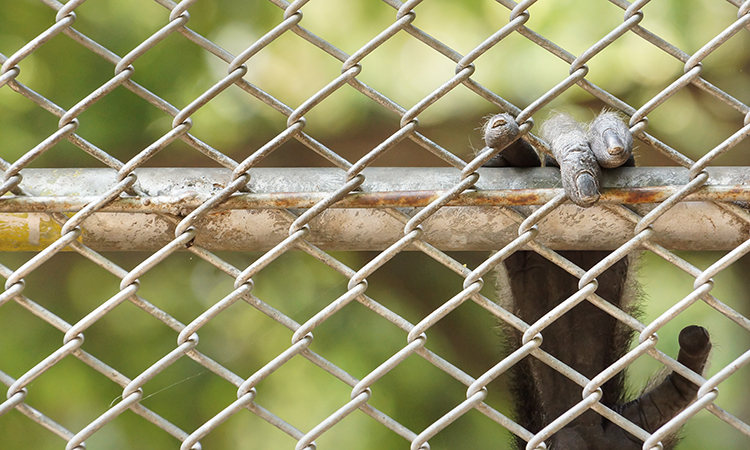How the aviation industry transformed to combat wildlife trafficking
- Like
- Digg
- Del
- Tumblr
- VKontakte
- Buffer
- Love This
- Odnoklassniki
- Meneame
- Blogger
- Amazon
- Yahoo Mail
- Gmail
- AOL
- Newsvine
- HackerNews
- Evernote
- MySpace
- Mail.ru
- Viadeo
- Line
- Comments
- Yummly
- SMS
- Viber
- Telegram
- Subscribe
- Skype
- Facebook Messenger
- Kakao
- LiveJournal
- Yammer
- Edgar
- Fintel
- Mix
- Instapaper
- Copy Link
Before 2015, there was very little awareness of wildlife trafficking via air among the aviation industry, but the formation of the USAID Reducing Opportunities for Unlawful Transport of Endangered Species (ROUTES) Partnership catalysed a global response. At the end of six years of the Partnership, ROUTES reflects upon its impact and explains how the industry is effectively equipped to help combat this crime.


The key to ROUTES’ success was the bringing together of an array of different voices and expertise. The Core Team of ROUTES was made up of aviation organisations Airports Council International (ACI) and International Air Transport Association (IATA), and NGOs (The Center for Advanced Defense Studies (C4ADS), TRAFFIC, WWF) and government bodies (U.S. Agency for International Development (USAID), U.S. Department of Homeland Security, U.S. Department of State, U.S. Fish and Wildlife Service).
Juliana Scavuzzi, Senior Director of Sustainability, Environmental Protection, and Legal Affairs at ACI World commented: “ROUTES was a game changer for ACI in terms of bringing the necessary resources and expertise so we could support our member airports better understand their role in helping to prevent this complex and transnational crime.”
An informed industry
One of the initial steps was to dig into the situation: to collate data and provide a research-based foundation for prioritising outreach and building a response. Six in-depth reports released by ROUTES detail statistics and trends of the nature of wildlife trafficking in aviation and the risks it poses. Data is also available on the ROUTES Dashboard – a platform that allows users to interact with and filter data and investigate region or route-specific risk.
From here, ROUTES began to build an extensive suite of training materials in multiple languages (including e-learning courses, presentations and awareness videos) which companies can adopt into their own training programmes. Members of the Core Team also conducted in-person or online trainings in 20 countries, from Mexico to Qatar and Japan to Mozambique.
“Being part of an industry collaboration gave us our best opportunity for lasting impact and a standardised approach to IWT prevention within the sector,” said Afsoon Namini, Director of Private Sector Engagement at WWF-U.S.
A committed industry
As ROUTES’ efforts caused awareness to grow among aviation stakeholders, airlines, airports, associations and more realised their potential to make a difference. Despite interception and arrest of wildlife traffickers being the responsibility of law enforcement, many companies committed to taking action by signing the United for Wildlife Buckingham Palace Declaration (BPD), taking formal assessments of their wildlife trafficking prevention standards, and championing the cause by encouraging other businesses to step up. These industry leaders, along with the continued upward trend in resource use, BPD signatories and assessment certification give great assurance that although ROUTES is no longer in operation, efforts to combat wildlife trafficking in aviation will continue, using ROUTES resources.
Jon Godson, Assistant Director of Aviation Environment, IATA acknowledged the change ROUTES has brought about among airlines, he added: “67 airlines signing the Buckingham Palace Declaration, representing over one third of global traffic, is an amazing achievement and would not have occurred in the absence of ROUTES.”
An equipped industry
In addition to guidance and training materials to prepare companies in advance of wildlife trafficking events, ROUTES has also developed technological solutions for use on the ground and in the moment. In September 2021 and in collaboration with Crime Stoppers International (CSI), ROUTES launched Wildlife Sentinel – an anonymous illegal wildlife trade reporting app for aviation staff. Users fill in a simple form with details of a wildlife trafficking suspicion, and then the report is sent to CSI to review it and share with the appropriate law enforcement agencies. Within two months of the app becoming available online, more than 120 reports were submitted by aviation personnel. ROUTES also supported and co-ordinated the development of an algorithm to detect priority wildlife products in baggage screening X-ray systems at airports which has the potential to detect a broad range of smuggled wildlife products and other illicit goods.
ROUTES has finished, but the work has not
ROUTES leaves a vast suite of training resources, guidance, and tools in its wake, and a global network of aviation industry champions committed to combatting wildlife trafficking in air transport well into the future.
“We must not squander ROUTES’ legacy – let’s build and scale from here. We have the knowledge and right approaches to make transport sector leadership the norm in preventing wildlife trafficking globally,” commented Crawford Allan, ROUTES Oversight, TRAFFIC.
Related topics
Airside operations, Safety, Security, Social responsibility, Terminal operations, Wildlife hazards
Related organisations
Airport Council International (ACI), Center for Advanced Defense Studies (C4ADS), Crime Stoppers International (CSI), International Air Transport Association (IATA), Routes, TRAFFIC, U.S. Department of Homeland Security, U.S. Department of State, U.S. Fish and Wildlife Service, USAID, World Wide Fund for Nature (WWF)



















More needs to be done. Illegal wildlife traders have found ways to get around ROUTES law.